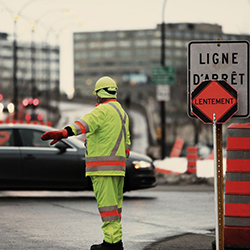In an age where road safety is paramount, traffic calming devices have become essential tools in managing vehicle speeds and enhancing the safety of pedestrians, cyclists, and drivers alike. This article delves into various traffic calming devices, focusing on the role of speed bumps and other effective measures.
Traffic calming devices are designed to slow down traffic and improve safety on roads, particularly in residential areas, school zones, and places with high pedestrian activity. By implementing these measures, communities can reduce the risk of accidents, lower traffic noise, and create a safer, more livable environment.
What Are Traffic Calming Devices?
Traffic calming devices are physical installations on roads that compel drivers to reduce their speed. These devices are strategically placed to manage traffic flow, enhance safety, and protect vulnerable road users.Types of Traffic Calming Devices
There are several types of traffic calming devices, each serving a specific purpose:- Speed Bumps: Short, raised sections of road designed to slow vehicles down significantly.
- Speed Humps: Longer and flatter than speed bumps, they provide a gentler reduction in speed.
- Speed Tables: Elongated humps with a flat top, used in areas with pedestrian crossings.
- Rumble Strips: Grooved patterns on the road that create vibrations, alerting drivers to reduce speed.
- Chicanes: Artificial turns or curves in the road that force drivers to slow down.
- Traffic Circles: Small roundabouts that reduce vehicle speeds and improve traffic flow.
- Raised Crosswalks: Pedestrian crosswalks elevated to the level of the sidewalk, slowing down vehicles while providing safe crossing.
Speed Bumps: An Essential Traffic Calming Measure
What Are Speed Bumps?
Speed bumps are one of the most common traffic calming devices. They are raised sections of pavement, typically 3 to 6 inches high and 1 to 3 feet long, that create a noticeable jolt when driven over, compelling drivers to slow down.Benefits of Speed Bumps
- Effective Speed Reduction: Speed bumps are highly effective in reducing vehicle speeds, particularly in areas with high pedestrian traffic.
- Enhanced Safety: By slowing down vehicles, speed bumps reduce the risk of accidents, protecting pedestrians, cyclists, and other road users.
- Cost-Effective: Speed bumps are relatively inexpensive to install and maintain, making them a cost-effective solution for improving traffic safety.
Where to Use Speed Bumps
Speed bumps are ideal for:- Residential neighborhoods
- School zones
- Parking lots
- Private roads
Speed Humps: A Versatile Traffic Calming Device
What Are Speed Humps?
Speed humps are similar to speed bumps but are designed to be less abrupt. They are typically 10 to 14 feet long and provide a gentler rise and fall, making them suitable for roads where moderate speed reduction is desired.Benefits of Speed Humps
- Smooth Traffic Flow: Speed humps reduce speed without causing significant discomfort to drivers, maintaining smoother traffic flow.
- Moderate Speed Reduction: While they slow down vehicles, speed humps allow for slightly higher speeds than speed bumps, making them suitable for a broader range of roads.
- Versatility: Speed humps can be used on various types of roads, including residential streets and minor collector roads.
Where to Use Speed Humps
Speed humps are effective in:- Residential streets
- Suburban roads
- Areas with moderate pedestrian activity
- Roads near parks and playgrounds

